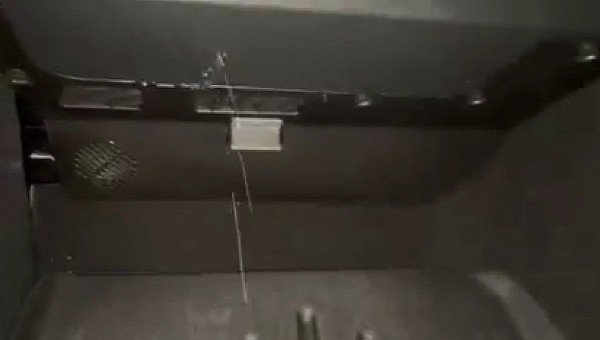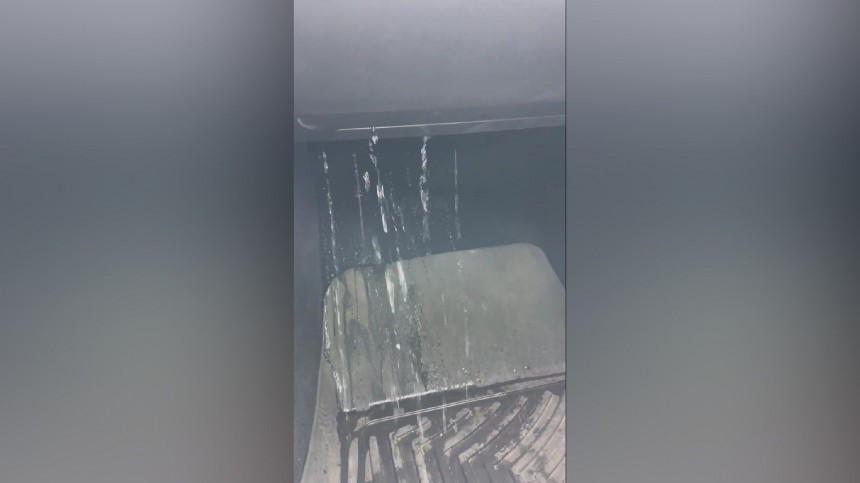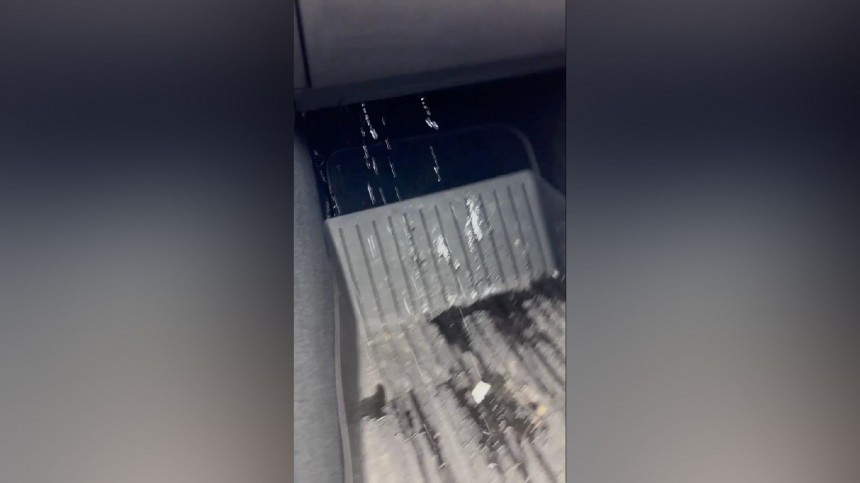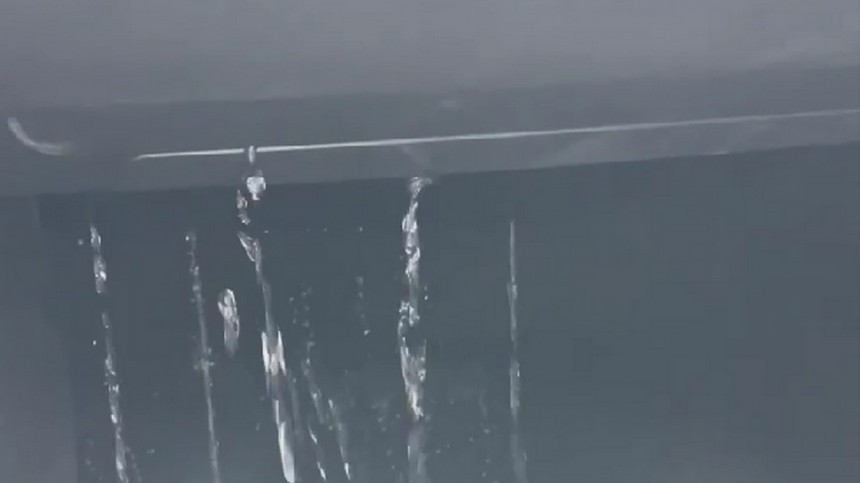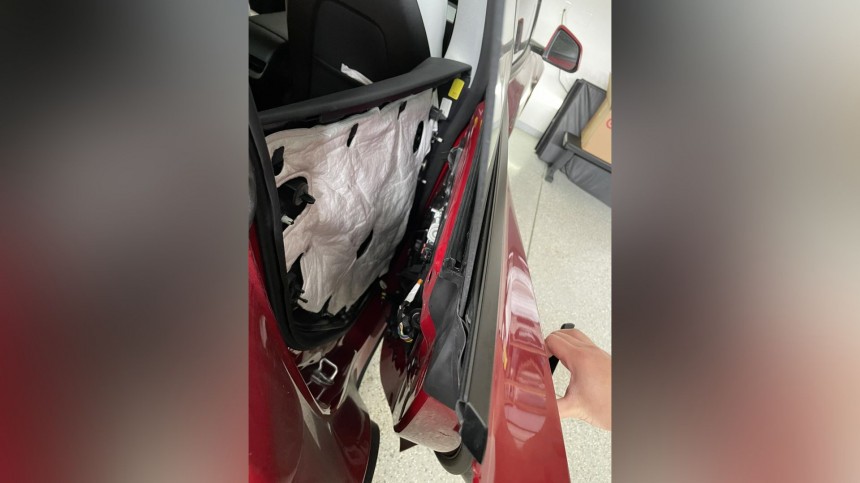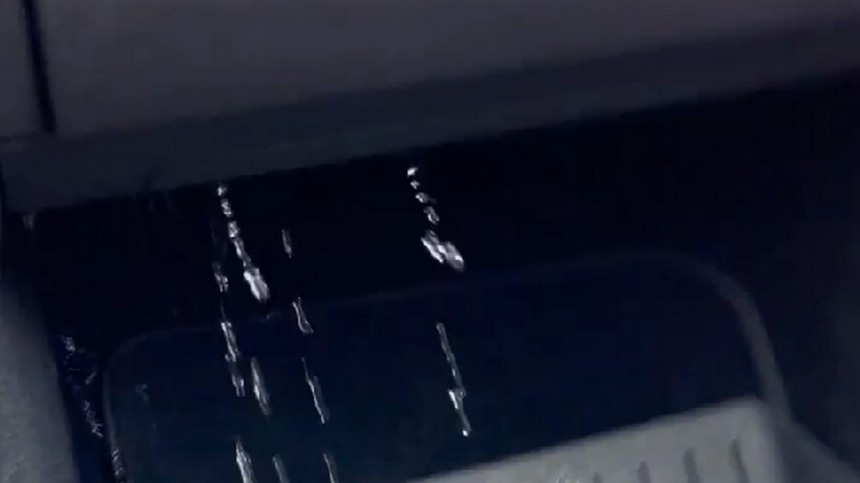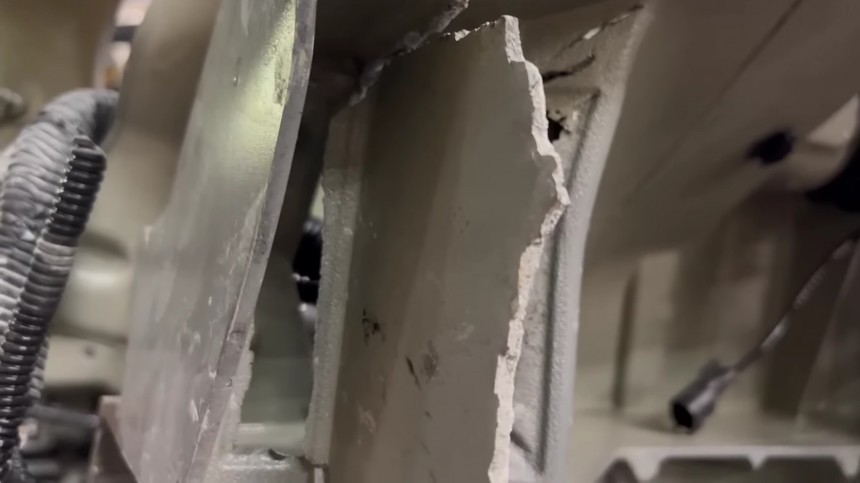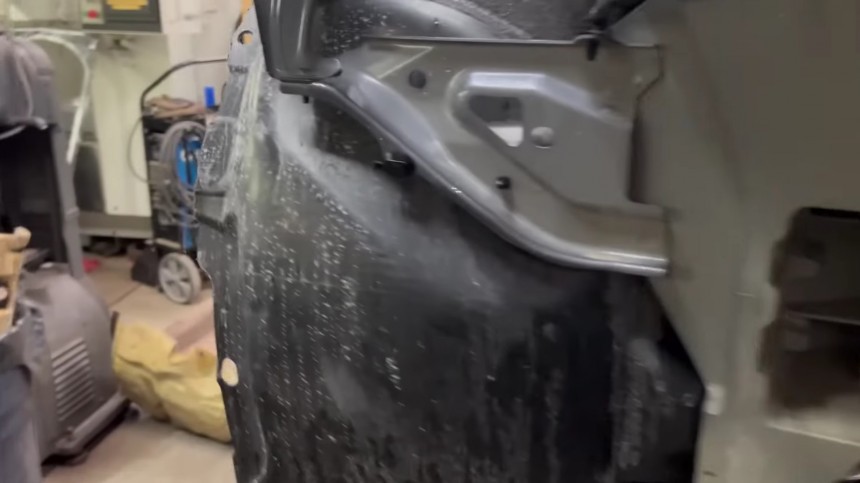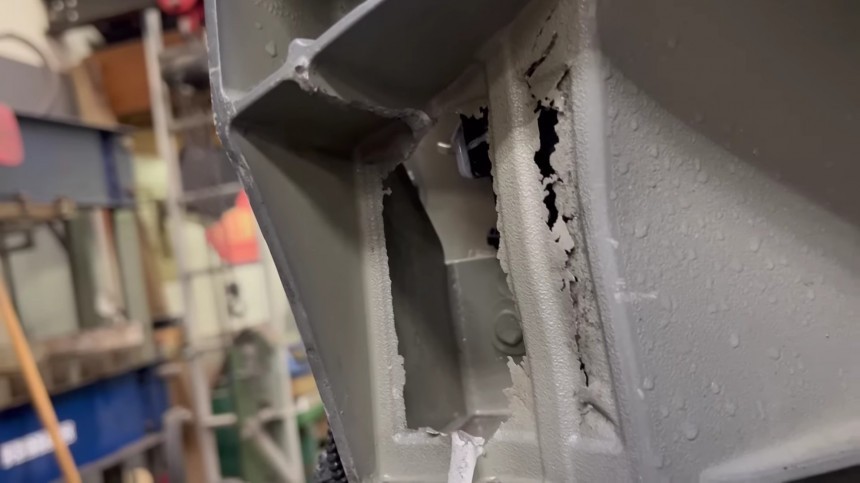The Merriam-Webster dictionary defines ethos as “the distinguishing character, sentiment, moral nature, or guiding beliefs of a person, group, or institution.” If anyone were to establish Tesla’s ethos based on the EV maker’s current and past news, it would be a disregard for quality control or repairability. Three recent issues prove that: two new ones and something more familiar.
Starting with what Tesla should have already fixed, water ingress is a notorious problem with the company’s EVs: I have been writing about it since I began to cover electric cars more frequently in 2019. Tesla vehicles may retain water in their trunk lids, doors, and also inside their trunks and frunks. Some units allow liquids to invade the cabin through their A-pillars when they hit puddles and also through the air vents behind the glove box. The first time I wrote about this last issue was in January 2020.
Caleb Sundvall had just taken delivery of his Tesla Model 3 in December 2019. After leaving a touchless car wash, he noticed soapy water pouring in at the front passenger’s footwell. I never heard back from Sundvall, but I hope Tesla fixed it for him. Similar cases popped up here and there until I did not hear about them anymore. I hoped that was fixed, but I was wrong.
In a Facebook group, the user AM posted a video in which she shared the same issue Sundvall experienced three years ago. I have not spoken to these users, so I will not reveal their true identities. The main differences between her case and Sundvall’s are related to the car – a 2022 Tesla Model Y Performance – and the date: the incident occurred after a rainy February 13 in her neighborhood.
With more than three years to fix the problem, Tesla keeps reproducing it on God knows how many other units and even in different models. When I published my first story about the issue, the Tesla Model Y was still two months from its first deliveries. There was plenty of time to fix it with the Model 3 and to avoid it on the Model Y, but, as I have written before, the American EV maker thought making cars on a large scale was like writing software and that over-the-air (OTA) updates would fix everything. Long story short, they don’t.
In the same thread started by AM, I learned about AL’s case, who complained about the same problem in March 2022. He also shared footage of what happened with his car. AL had been driving his then brand-new Model Y for two weeks before noticing the water dropping from behind the glove box into the front passenger’s footwell. Nine other people experienced the same flaw in that discussion alone.
One of them was CD, who came up with another video and the explanation provided by the Tesla Service Center: the water drainage under the HEPA filter. When it has issues, the water sloshes back under acceleration and comes out of the HVAC vents. You can check a compilation of the videos below.
This is something that also happened to Thomas Hiyil. As he publicly complained about that on Twitter, I can tell his story without using initials. Hiyil took delivery of his Model S Plaid on August 25, 2021, and accelerated it hard with a Tesla representative. According to the frustrated owner, “nearly three cups of water flew out of the rear vents and soaked the flooring of the Plaid.” Hiyil tagged Elon Musk and apparently managed to return the car and get a refund. According to the Tesla customer, the issue was also related to the water drainage because the EV maker “forgot to install the AC drain pipe.”
The Model S uses a different platform than that underpinning the Model 3 and Y, so the possibility that the issue is the same is very remote. Anyway, the electric sedan and the Model X are no strangers to air-conditioning problems. A drainage hose placed right over their battery packs caused the steel cover of the fuse box to rust, which made water invade and kill several of these components.
Why does the water drainage in the Model 3 and Model Y have issues under the HEPA filter? If these were used cars, some could argue leaves or other sorts of dirt accumulated there. However, some of these vehicles had just left the Tesla Service Center lots. I don't know if that was the case for the Model Y DL, but it was hopefully covered under the 50,000-mile warranty when the right rear door panel just decided to eject. This is the first new problem this story reveals.
As anecdotal as this may sound, there is at least one more case: AW reported the same issue in the thread, just stressing the door panel in his Model Y did not adopt the “Wrangler package,” as some other users joked. In other words, the door trim would not detach from the door: it would just prevent it from opening by getting jammed around the latch area.
Some other users came up with a possible explanation for the defect: two retention bolts that are probably missing. One commenter used that to bash Tesla’s lack of quality control, and another one, who is used to disassembling his car, stated the bolts are certainly missing because the trim would never have moved had they been in place.
The last new issue relates to the castings Tesla uses in the Model Y – and will probably also adopt on the Model 3 “Highland.” Several safety specialists and repair experts have anticipated that crashing a vehicle with these cast parts would most certainly imply writing off these cars. Oliver Zipse was even more vocal about that. The BMW CEO said the manufacturing advantages of a massive cast part would not compensate for the higher repair costs. This was the reason the German carmaker would never adopt the same strategy.
Tesla fans argued that a crash that destroyed one of the company’s castings would certainly turn any vehicle into junkyard material. A video from Dan Roelofsen, from 519 Kustomz, suggests that is not always the case. On the contrary: the concerns about reparability are well-founded.
The welder and builder bought a salvage-title 2022 Tesla Model Y made at Giga Austin. The vehicle was involved in a front collision that broke a small part of the front cast structure of the electric SUV. It is not clear if that was what totaled the EV. However, insurance companies probably do not recommend repairing the casting, which implies having to replace the entire structure. It is not financially feasible to do so.
Although the EV was bought so that 519 Kustomz could extract its 4680 cells, Roelofsen decided to try to weld the casting part that broke. He presented it in his video: it is a weird appendix on each side of the cast component where wings that support the front side of the fenders are joined by three welding points each.
Roelofsen calls the appendix a “completely unnecessary part,” which would likely break “in any sort of accident.” The builder thinks it would be cleverer just to have the entire wing bolted to the massive casting to favor repairability. It is a pity that Tesla does not give a damn about that.
When anything breaks, the company just replaces the entire module because that is easier for Tesla Service Centers: they spend less time putting the car back to work. That happens with rear seats, battery packs, and other expensive components. Even with that strategy, these repair centers are crowded, and getting an appointment is either very complicated or is only possible weeks or months from when the problem manifests.
Too bad for Tesla customers if they have to spend more than they can afford or for insurance companies if they have to pay for new cars for their customers, even in minor crashes. Insurance companies still have the option to charge much higher for EV policies, which is the main reason for Tesla to think it has to compete with them.
There you have it: multiple Tesla customers are affected either by old problems the EV maker should have already fixed or by new ones that minimally competent quality control teams could avoid. If they did so, Tesla Service Centers would not have to spend so much time fixing what the factories did not deliver as they should in the first place.
Mind you that this does not include design flaws or service strategies that will cost these owners buckets of money to fix should anything go wrong. If that is not an ethos, I have no idea what that means. So much so that I’d feel gullible to attribute these things to misfortune, incompetence, or accidents. This has been happening for so long that it has to be by design.
Caleb Sundvall had just taken delivery of his Tesla Model 3 in December 2019. After leaving a touchless car wash, he noticed soapy water pouring in at the front passenger’s footwell. I never heard back from Sundvall, but I hope Tesla fixed it for him. Similar cases popped up here and there until I did not hear about them anymore. I hoped that was fixed, but I was wrong.
With more than three years to fix the problem, Tesla keeps reproducing it on God knows how many other units and even in different models. When I published my first story about the issue, the Tesla Model Y was still two months from its first deliveries. There was plenty of time to fix it with the Model 3 and to avoid it on the Model Y, but, as I have written before, the American EV maker thought making cars on a large scale was like writing software and that over-the-air (OTA) updates would fix everything. Long story short, they don’t.
One of them was CD, who came up with another video and the explanation provided by the Tesla Service Center: the water drainage under the HEPA filter. When it has issues, the water sloshes back under acceleration and comes out of the HVAC vents. You can check a compilation of the videos below.
The Model S uses a different platform than that underpinning the Model 3 and Y, so the possibility that the issue is the same is very remote. Anyway, the electric sedan and the Model X are no strangers to air-conditioning problems. A drainage hose placed right over their battery packs caused the steel cover of the fuse box to rust, which made water invade and kill several of these components.
As anecdotal as this may sound, there is at least one more case: AW reported the same issue in the thread, just stressing the door panel in his Model Y did not adopt the “Wrangler package,” as some other users joked. In other words, the door trim would not detach from the door: it would just prevent it from opening by getting jammed around the latch area.
The last new issue relates to the castings Tesla uses in the Model Y – and will probably also adopt on the Model 3 “Highland.” Several safety specialists and repair experts have anticipated that crashing a vehicle with these cast parts would most certainly imply writing off these cars. Oliver Zipse was even more vocal about that. The BMW CEO said the manufacturing advantages of a massive cast part would not compensate for the higher repair costs. This was the reason the German carmaker would never adopt the same strategy.
The welder and builder bought a salvage-title 2022 Tesla Model Y made at Giga Austin. The vehicle was involved in a front collision that broke a small part of the front cast structure of the electric SUV. It is not clear if that was what totaled the EV. However, insurance companies probably do not recommend repairing the casting, which implies having to replace the entire structure. It is not financially feasible to do so.
Roelofsen calls the appendix a “completely unnecessary part,” which would likely break “in any sort of accident.” The builder thinks it would be cleverer just to have the entire wing bolted to the massive casting to favor repairability. It is a pity that Tesla does not give a damn about that.
Too bad for Tesla customers if they have to spend more than they can afford or for insurance companies if they have to pay for new cars for their customers, even in minor crashes. Insurance companies still have the option to charge much higher for EV policies, which is the main reason for Tesla to think it has to compete with them.
Mind you that this does not include design flaws or service strategies that will cost these owners buckets of money to fix should anything go wrong. If that is not an ethos, I have no idea what that means. So much so that I’d feel gullible to attribute these things to misfortune, incompetence, or accidents. This has been happening for so long that it has to be by design.
